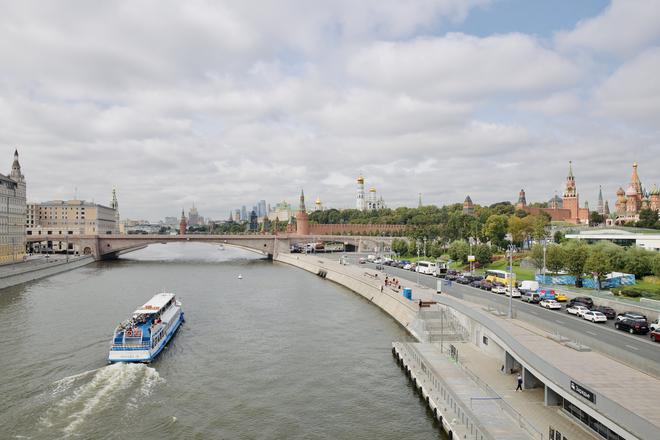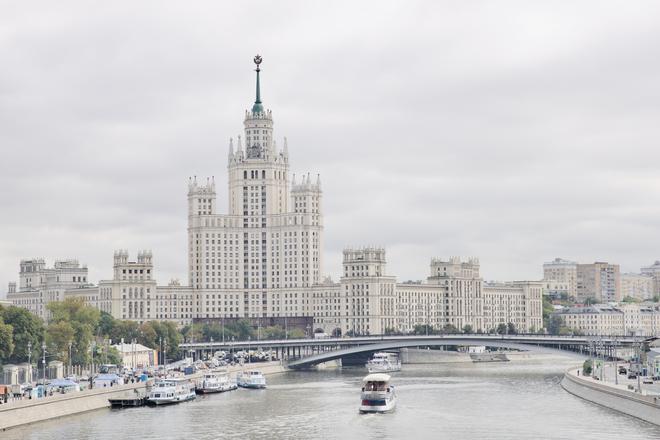It is a balmy afternoon in Moscow and everywhere one goes, there is a whir in the air. “What do you expect when there’s months of snow up ahead? This is the time for cranes and construction, to raze and build,” our Russian facilitator says providing context.
One would have expected to find a city under siege, reeling from the repercussions of a long-drawn conflict with a neighbouring country. Instead, what one finds is a capital on the move, going about its business, with war clouds a distant cry.
The blowback, of course, has been massive, with West-led financial sanctions freezing Russia’s assets beyond borders and rupturing its links with the international monetary system. There have, however, been workarounds in this business-as-unusual environment: cash is king again, and the yuan is a godsend for the rouble. And if Western tourist arrivals are down to a trickle, West Asians and the Chinese are coming in droves – around one-third of the inbound traffic excluding former Soviet states originated from China before the onset of the pandemic.
This has prompted Moscow city authorities to recast its tourism pitch. While its rich history, from the rule of the Grand Princes and Tsars to the Soviet era, is still the top draw, the Russian capital – Europe’s largest – is also presenting its modern face to visitors.
What’s new

There are now over 100 spots in Moscow offering panoramic views of the city, the cable car over the Moskva river and the soaring bridge in Zaryadye, opened in 2017, among the best. City sightseeing on double-deckers and river cruises is another recent attraction, especially on the ice-class yachts with on-board restaurants.
While the Bolshoi ballets remain the gold standard, the Russian National Ballet “Kostroma”, founded in 1991, is a must-see if there is an ongoing show in town. The two-hour dance production combines folklore, ancient epics and lyrical sketches for a retelling of the history of Russia down the ages.
Among similar new attractions are the Jewish Museum and Tolerance Center opened in 2012, the Multimedia Art Museum opened in 2010, and Moskvarium aquarium and theme park, one of Europe’s largest, that was unveiled as recently as 2015.
There is also a rapid embrace of English, a rarity not so long ago. Signs in English are now a common feature of the city’s transportation system, a process hastened in no small measure by the country playing host to the 2018 football World Cup. All announcements on public transport are repeated in English, crucial in a city whose ever-expanding metro rail network is its lifeblood.
Digital gateways enable the prospective holidayer to plan itineraries down to the last detail. Discover Moscow, a navigation and travel web portal about the capital, and Ruspass, a platform designed for planning trips across Russia, are a veritable ready reckoner for information on visas, money and cards, accommodation, transport and places to go and experiences to savour.

India outreach
The other big thing in the city is gastro-tourism. There are 19,000-odd food establishments offering different price bands and cuisines – at last count, Moscow had nine Michelin-star restaurants. In good news for the vegetarian Indian tourist, there is also a growing number of vegan and vegetarian eateries.
“The business environment is competitive… whenever they see a signal, for example, if they see more Indians, they will quickly adapt,” says Bulat Nurmukhanov, head of the International Cooperation Division of Moscow City Tourism Committee. “It was a steady growth before the pandemic, 12-15% year-on-year growth. Based on the first half of this year, we have already received about 20,000 Indians in Moscow – 56% higher than the same period last year. Indians are coming back.”
As autumn lapses into the long Russian winter, with its extended year-end holidays owing to Christmas falling on January 7 in the Julian Calendar, the whirring will end – but the festivities will begin.
(The author was on a visit to Moscow sponsored by the Moscow City Tourism Committee)







